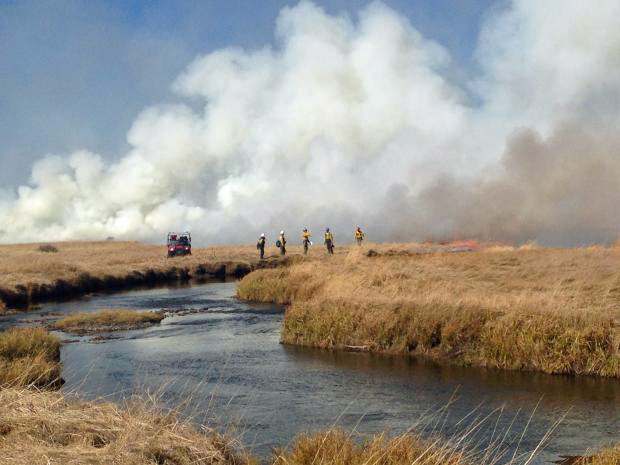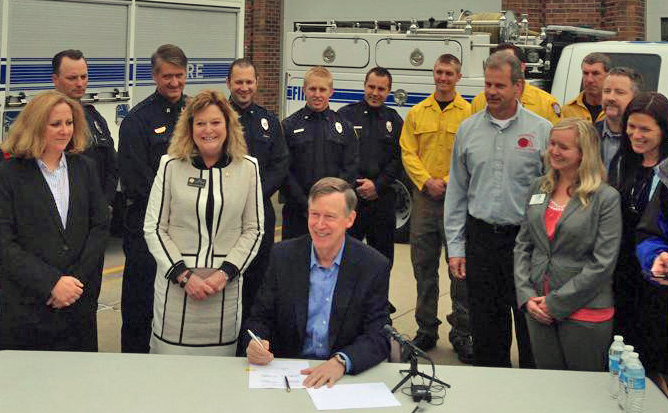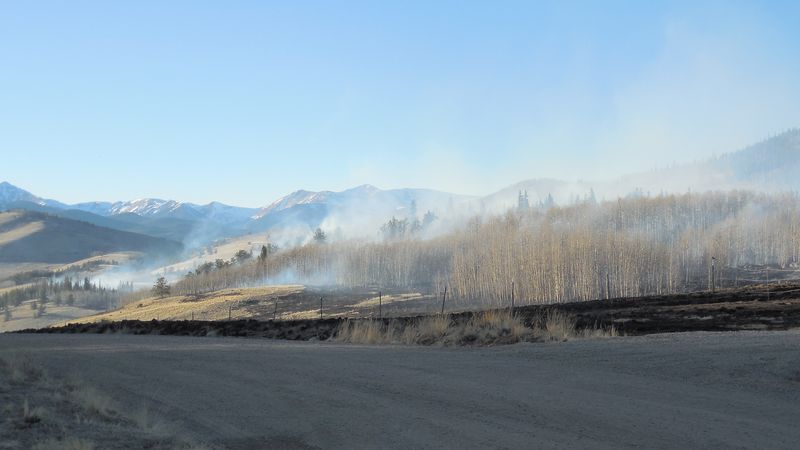On August 24 the Colorado State Fire Chiefs organization provided recommendations to Colorado’s Wildfire Matters Review Committee regarding how to improve the wildfire suppression capabilities within the state.
Below are brief excerpts from their 14 pages of testimony:
****
“…The three highest priority recommendations remain the same as made to the Committee on October 1, 2013 & August 4, 2014
#1 — Insure the stability and reliability of the current Colorado state-wide emergency radio system.
…There is still much to be done to assure seamless interoperability on a routine basis. Further, the progress that has been made is now in jeopardy. .
There are two major trunked digital systems in use throughout the State. The State Digital Trunked Radio System (DTRS) and a Harris system used by Denver, Aurora, and some surrounding jurisdictions. Significant grant funds have been invested in tying these systems together for interoperability.
But, ongoing maintenance challenges with the DTRS has resulted in Weld and Adams counties (Front Range Communication Consortium) purchasing another radio switch, effectively creating yet another radio system that may not provide seamless interoperability with the two existing systems
The reason for the third split is a very real concern that the DTRS is not being maintained by the state and the anticipation that with this maintenance neglect the DTRS will predictably fail…
#2 — Continue to invest in the development, expansion & implementation of the State resource mobilization plan.
If we cannot effectively mobilize, deploy and utilize firefighting resources then the efforts of this committee and the fire services across this state are minimized and lives are placed at risk.
DHSEM received three FTEs as part of HB13-1031 for this purpose. Due to multiple circumstances and back-to-back disasters there has been a delay in filling these three positions. These positions must be filled expeditiously and certainly before the end of 2013…
#3 — Expand the current local, regional and State command, control, and coordination capabilities.
Third in priority, after communications and resource mobilization is a solid incident command system that is rapidly scalable from a single jurisdiction incident to a multi-agency/multi-jurisdiction event
An incident command structure is essential to quickly organizing and efficiently utilizing the firefighting assets that will be mobilized under the State resource mobilization plan.
Investment in the five (5) current All-Hazard Incident Management Teams provides the best all-around ROI for the expenditure of state funding. The AHIMTs are force multipliers for all the local and state resources being managed in any major incident.
The state currently recognizes five (5) Type III All-Hazard Incident Management Teams. These teams are considered a statewide asset, but are all volunteer organized, staffed and funded and they currently receive absolutely minimal support from the state…
#4 — Provide sufficient funding to the Division of Fire Prevention and Control (DFPC) to fulfill its stated missions.
Ensure that all regions of the State have their assigned Fire Management Officers (FMOs). The FMOs are a capability that, when coordinating with a local firefighting force, significantly
increases their firefighting potential and thus enhances the probability of successful mission accomplishment.
However, the FMOs in each region are only one person deep and all FMOs can easily be fully engaged without any backup and sustained 24/7 operations are not possible with the current FMO staffing levels, especially when multiple regions are experiencing multiple fires (which is now considered the normal status operations during wildfire season)
Previously some regions in the state had as many as three district foresters from the Colorado State Forest Service. Funding for the DFPC also provides that initial response from the State to assist local agencies with determining if the fire will be handled locally or what additional resources will be required…
#5 — State aviation resources are an essential and integral part of the initial attack on WUI fires.
Provide funding support for the appropriate mix of firefighting aircraft to fill the gap between what is needed on WUI and wildland fires in Colorado and what the federal interagency system will provide.
The Colorado Air National Guard (Title 32) using its helicopter air support capabilities and fully qualified and trained crews, should become an integral part of the air attack plans and operations for WUI fires in Colorado…”
****
Thanks and a tip of the hat go out to Bean.



